20 Amazing Facts About Stars
Human beings have been making up stories and theories to explain the stars since prehistoric times, and the study of the stars has played a crucial role in the development of science and technology throughout history, inspiring everything from calculus to clockwork.
But the idea that the stars might be ‘suns’ in their own right, unimaginably distant from Earth, is a surprisingly recent one, and it’s only in the past century or so that astronomers have really got to grips with the true variety of stars.
Along the way, they’ve discovered that the Sun is really nothing special – a distinctly ‘average Joe’ compared to some of the extremes found elsewhere in our galaxy and the wider cosmos. And the journey of discovery is still ongoing.
While we now have convincing theories to explain the birth and death of stars, their internal power sources and their varied properties, new telescopes and satellites are continually revealing surprising new bodies that challenge our thinking and continue to inspire us with awe and wonder.
1. Are we stardust?
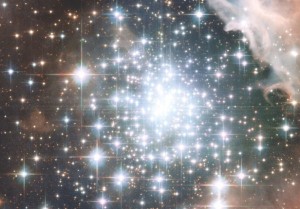 Absolutely – if it weren’t for generations of stars, the universe would contain nothing more than the light elements that formed in the Big Bang. Everything else, from the calcium in our bones to the carbon in our DNA, ultimately comes from stars.
Absolutely – if it weren’t for generations of stars, the universe would contain nothing more than the light elements that formed in the Big Bang. Everything else, from the calcium in our bones to the carbon in our DNA, ultimately comes from stars.
Deep in their cores, nuclear fusion forces the nuclei of lightweight atoms together to form heavier ones, and the heavier the star, the further this process goes.
Stars like the Sun create elements such as carbon, nitrogen and oxygen through their lives, and then scatter them across space when they die. Heavier stars release iron, gold and uranium when they go supernova.
2. What colour can stars be?
The colour of any star is a mix of different wavelengths of light, ranging from high-energy, short-wavelength blue and violet light emitted by the hottest materials, to lower-energy, longer-wavelength red and orange emitted by cooler gases. White stars represent an even balance between the two.
3. What’s inside a star?
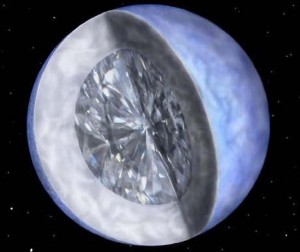 Convection zone – In this opaque region, energy is absorbed from below and carried up by moving masses of gas. At the photosphere, the gas releases its energy, cools and sinks back down.
Convection zone – In this opaque region, energy is absorbed from below and carried up by moving masses of gas. At the photosphere, the gas releases its energy, cools and sinks back down.
Photosphere – The visible surface of the star, where it becomes transparent and light escapes. The temperature of the photosphere determines the colour.
Radiation zone – High-energy photons bounce around in this dense interior region, gradually losing their energy as they push their way outwards over many millennia.
Core – Temperatures in this super-dense region reach millions of degrees, triggering nuclear fusion processes that release high-energy radiation -ie gamma and X-rays.
Sunspots – Magnetic fields pushing out through the photosphere create cooler areas that appear dark compared to the rest of the star’s surface.
Corona – Above the photosphere is a vast outer atmosphere which is superhot but sparse. Denser structures within this layer include prominences and flares.
4. Why do stars twinkle?
They don’t. Their light gets distorted by churning gases in Earth’s atmosphere – hence why telescopes are built on mountains, above the bulk of the air. We only notice the twinkling as stars are tiny points of light; planets don’t twinkle as they’re close enough to appear as tiny discs.
5. Which is the farthest star that we can see?
Ignoring occasional flare-ups such as supernovas, the farthest star we can reliably see with the naked eye is the obscure V762 Cassiopeiae, which is just visible under dark skies and is around 16,300 light years away. The most distant well-known star, meanwhile, is Deneb, the brightest star in the constellation of Cygnus, the Swan. It lies a still impressive 2,600 light years away and is the 19th brightest star in the sky, suggesting it is around 200,000 times more luminous than the Sun.
6. What is a neutron star
Neutron stars are extreme stellar remnants formed after a giant star goes supernova. When the star runs out of fuel, it collapses under its own weight, creating a huge Shockwave that compresses the core from the size of our Sun to roughly the size of London. Atomic nuclei in the core are torn into their subatomic components and protons are transmuted into yet more neutrons that can reach crazy densities: a pinhead of neutron star material can weigh as much as a fully laden supertanker!
7. How are stars named?
The brightest stars have proper names that often originated with Ancient Greek or Arabic astronomers – for instance, Sirius, the brightest star in the night sky, has a name derived from the Greek for “scorcher”. The bright stars in each constellation are also named with Greek letters in alphabetical order – so Sirius is also Alpha Canis Majoris.
8. Can we tell if the stars we see have died?
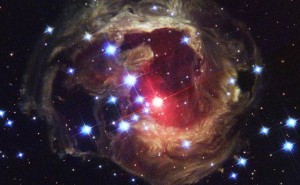 Stars take millions or billions of years to move through their life cycles, but the light from stars in our galaxy usually spends a few thousand years at most travelling to Earth. On the law of averages, then, it’s pretty unlikely that a star will have died in the intervening time, but there are some exceptions, eg Eta Carinae might have already exploded.
Stars take millions or billions of years to move through their life cycles, but the light from stars in our galaxy usually spends a few thousand years at most travelling to Earth. On the law of averages, then, it’s pretty unlikely that a star will have died in the intervening time, but there are some exceptions, eg Eta Carinae might have already exploded.
9. How can a star burn with no oxygen in space?
Blame astronomers for the misleading word ‘burn’ -stars aren’t going through the same kind of combustion we see on Earth. Instead, stars feed off their hydrogen fuel by forcing individual nuclei together until they transmute into helium and eventually other elements in a process known as nuclear fusion.
10. What exactly is a white dwarf?
White dwarfs are the superhot, burnt-out cores of stars like the Sun, exposed when a dying red giant star sheds its outer layers. With no nuclear fusion left to support it, the core collapses under its own weight until it is about the size of Earth, but typically still contains roughly half a Sun’s mass of material.
11. What are main-sequence stars?
Most stars spend the majority of their lives in what astronomers call the ‘main sequence’. This phase marks the period when they generate energy by nuclear fusion of hydrogen into helium. A star’s position on the main sequence is governed by its mass – the lightest main-sequence stars are small, red and faint, while the heaviest are big, blue and brilliant.
12. What’s the difference between a nova, supernova and hypernova?
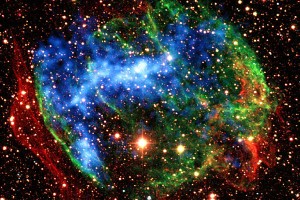 Novas are relatively small explosions in double star systems. They come about when a white dwarf’s intense gravity tugs material away from a companion star. Gas piles up around the white dwarf and eventually becomes dense enough to ignite in a burst of nuclear fusion. Most supernovas, meanwhile, mark the deaths of massive stars and the formation of neutron stars. They are triggered when a Shockwave tears through the outer layers of a dying star, igniting a firestorm of nuclear fusion. Finally, hypernovas are ultra-energetic supernovas marking the birth of black holes and associated with the release of intense gamma-ray bursts.
Novas are relatively small explosions in double star systems. They come about when a white dwarf’s intense gravity tugs material away from a companion star. Gas piles up around the white dwarf and eventually becomes dense enough to ignite in a burst of nuclear fusion. Most supernovas, meanwhile, mark the deaths of massive stars and the formation of neutron stars. They are triggered when a Shockwave tears through the outer layers of a dying star, igniting a firestorm of nuclear fusion. Finally, hypernovas are ultra-energetic supernovas marking the birth of black holes and associated with the release of intense gamma-ray bursts.
13. Which stars are the biggest and smallest?
The biggest known star is an unstable red hypergiant called NML Cygni, about 5,500 lightyears from Earth – its diameter of around 1,600 Suns makes it close to twice the size of Betelgeuse. The smallest star is 0GLE-TR-i22b, a tiny red dwarf only slightly larger than Jupiter and with just a tenth the mass of the Sun. Anything smaller is a brown dwarf.
14. Where is Betelgeuse?
With a diameter large enough to swallow up Jupiter’s orbit around the Sun, Betelgeuse is the closest supergiant star to Earth 640 light years away in the Orion constellation. Nearing the end of its life, it has developed a series of internal shells creating energy from the fusion of various elements, increasing its energy output to the equivalent of 120,000 Suns. The pressure of radiation pouring out from the star’s interior has caused its outer layers to balloon to a vast size and cool to a deep red.
15. How are stars made?
The birth and death of a star depend on its mass. Average stars like the Sun may live for billions of years and end their lives as white dwarfs, while heavyweights live fast and die young. Ultimately, all stars scatter material across space to produce the next generation.
Nebula collapse – Star formation begins when a cloud of interstellar gas and dust begins to collapse, perhaps triggered by a supernova Shockwave, or by gentler tides from passing stars.
Stellar globules – The nebula gradually separates into dense knots of matter, each a seed for a potential new star or multi-star system. Within these dark clouds, matter continues to coalesce.
Outflow – Over time the nebula flattens into a disc with a protostar at the centre, flinging off material along its axis of rotation.
Ignition – Eventually, the protostar becomes hot and dense enough to trigger nuclear fusion within its core – a new star is born.
Planets – The material in the surrounding disc is either pulled into the star, or blown outward. The rest may coalesce to form planets.
16. What is the hottest star?
Eta Carinae – The brighter component of unstable double star Eta Carinae is a blue hypergiant – perhaps the hottest star known with a temperature of 37,000°C (67,000°F).
17. How many stars are there in the universe?
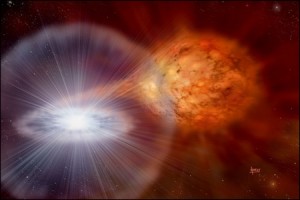 Brace yourself for some big numbers. Astronomers believe there are probably somewhere between 10 sextillion (21 zeros) and 1 septillion (24 zeros) stars in total. That’s based on recent discoveries that there are a lot more tiny, faint stars lurking in large galaxies than previously thought, and some educated guesswork on the total number of galaxies themselves.
Brace yourself for some big numbers. Astronomers believe there are probably somewhere between 10 sextillion (21 zeros) and 1 septillion (24 zeros) stars in total. That’s based on recent discoveries that there are a lot more tiny, faint stars lurking in large galaxies than previously thought, and some educated guesswork on the total number of galaxies themselves.
18. If we poured a giant bucket of water on a star, could we extinguish it?
Funnily enough, it would probably have the opposite effect. The ferocity of nuclear fusion in a star depends on the temperature and pressure in its core, so if we added a huge amount of extra mass to the star in the form of all that hydrogen and oxygen, we’d increase the star’s mass and central pressure, in turn making it shine brighter.
19. How do people use the stars to navigate?
Because objects in the sky stay fixed, even as Earth rotates beneath them, they form a perfect reference point for navigators. If you have an almanac and an accurate clock, you can calculate your latitude by measuring the height of a star passing across the meridian (north-south line across the sky). Similarly, you can work out latitude by comparing ‘local noon’, when the Sun crosses a particular meridian, with the time at a fixed location such as the Greenwich Meridian.
20. How is the distance to a star calculated?
The only way to measure a star’s distance directly uses parallax – measuring the tiny difference in a star’s apparent position in the sky when we look at it from different points of view (on opposite sides of Earth’s orbit around the Sun). This only works for nearby stars, but, using parallax, astronomers can discover patterns in stellar behaviour from which they can work out the brightness of stars independently. They can then use this to extrapolate the distance of more remote stars.

